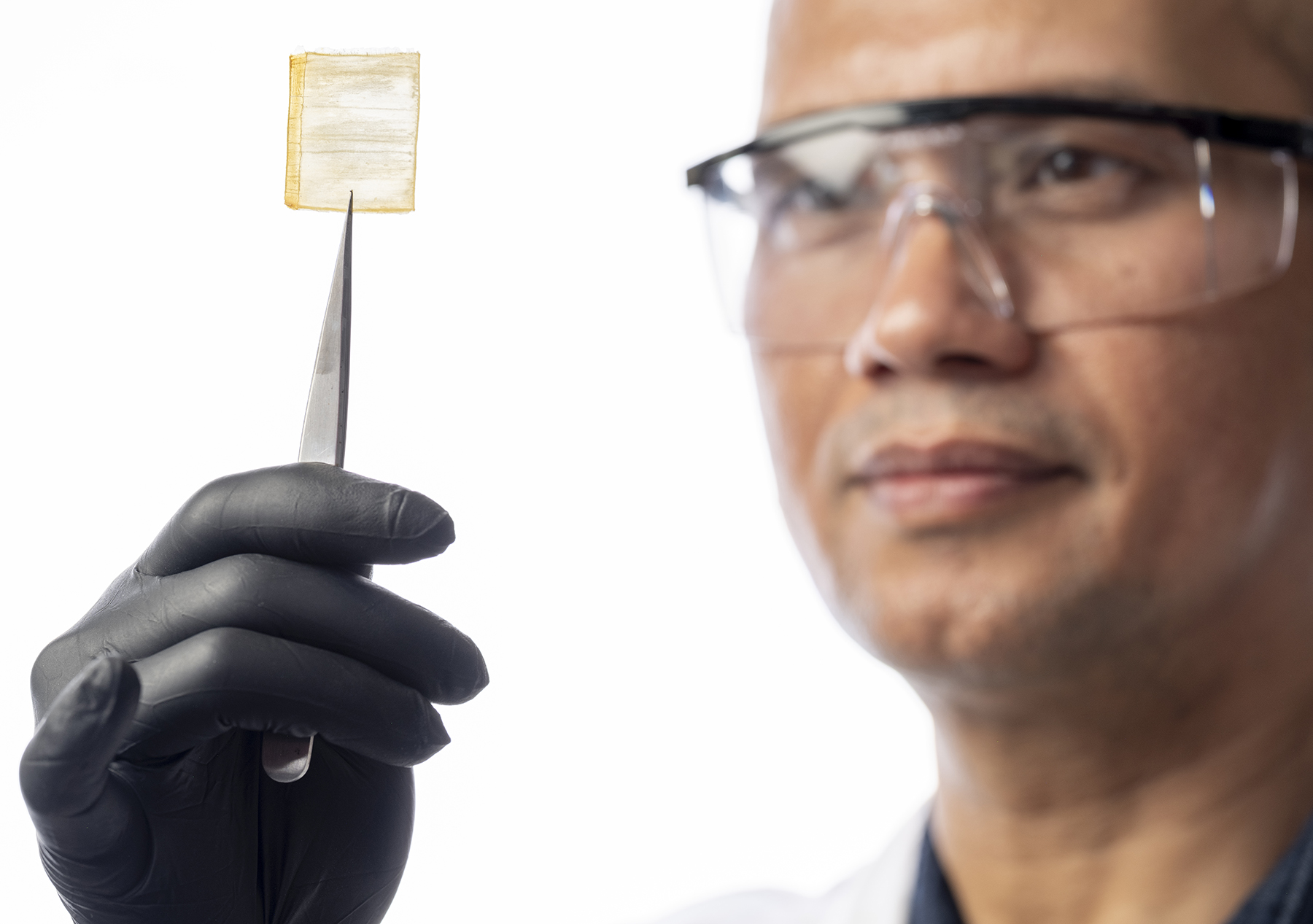 Darnell Wilburn, Kennesaw State University
Darnell Wilburn, Kennesaw State UniversityA new approach to producing transparent wood renders it biodegradable, possibly providing an environmentally friendly alternative to the plastics used in consumer electronics, packaging, and other products.
Research by Kennesaw State University chemistry and biochemistry professor Bharat Baruah, Ph.D., replaces traditional epoxy with organic materials, such as egg whites and rice extracts, in the production process.
Further reading:
- With apologies to that first little pig, building with straw has lots of upside
- Paris Olympics swim venue’s timber elements put sustainability on display
- Oregon gains power-efficient, seismically robust airport terminal
“If you think about all the electronic devices that we use nowadays, considering cellphones or computers (and the) end of the lives of those devices, most of the material we use, specifically glass and plastic, they are not biodegradable, creating a lot of junk after the life of the device,” said Baruah, who sees his first demonstrations as “baby steps” toward a more eco-friendly device life cycle.
Building for the long haul
Baruah’s material selection ideas originate from eastern India, where he grew up, specifically from the region’s lack of metal and cement. In spite of this scarcity, in the 16th century, “they built some buildings, not just one story, multistory buildings – palaces, temples – that are still there. And what they used were egg and sticky rice” combined with the sand and clay available.
Natural wood consists of cellulose, lignin, and hemicelluloses plus minor amounts of other materials. According to the U.S. Forest Service, the ratios of these components determine the characteristics of wood, with the properties remaining relatively constant within a single species. A tree’s location and growth conditions will also affect the strength, durability, workability, and grain of its wood.
While cellulose, contained in cell walls, gives wood much of its structure and strength, lignin and hemicellulose act as the glue binding wood fibers together and help transport water and nutrients during the life of the tree. Lignin is what lends wood its brown color.
“Imagine I'm holding a bunch of straws in my hand. Those openings through the straws, that's how the tree gets the nutrients from the soil. If I cut a cross section, you can see all those circles in the straw,” said Baruah. “In between each straw, there are void spaces. And those void spaces are filled with cellulose and hemicellulose. Straws are made out of cellulose.”
In 1992, German botanist Siegfried Fink demonstrated that lignin and hemicellulose could be chemically removed, leaving a transparent, flexible wooden skeleton of just cellulose.
“All the straws are there, but there are void spaces because we removed the glue,” said Baruah.
Filling the voids with epoxy or other polymers can restore the wood’s rigidity while retaining its transparency.
Combining load-bearing functions with light transmittance opens new building design possibilities, such as transparent wood roofs replacing some of the need for artificial lighting. Compared with glass, transparent wood offers lower thermal conductivity, better impact strength, and lower density. It also scatters light at broader angles, potentially improving the efficiency of photovoltaic cells.
Saving energy
Windows that look like glass but are made of transparent wood could let optical light in while blocking the wavelengths carrying heat, lowering the energy needs of a building, says Baruah, citing one possible application.
But challenges remain around effective polymer infiltration during production, as impregnation difficulties increase with wood thickness, creating a limit to its current applications, according to a March 2025 paper published in the journal MDPI Molecules. Light transmittance also decreases with thickness.
Baruah’s next steps include improving the clarity of his biodegradable transparent wood, as the kiln-drying process currently renders a brownish tint. His team will also explore imparting electrical properties to the wood for further applications in consumer electronic devices.



